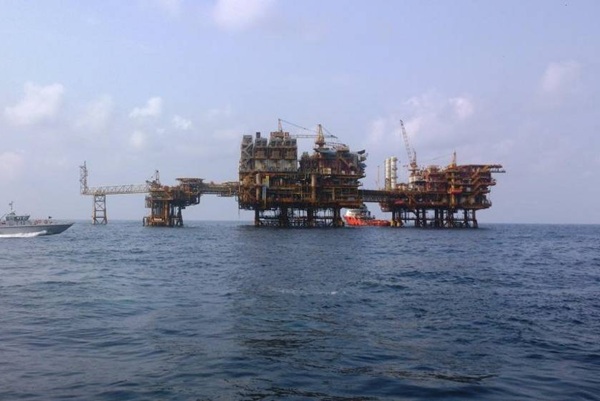.png)
Datametricx is a veteran journalist tallying the macro game, keeping score of the numbers that shape India’s economy and policy.
October 25, 2025 at 2:28 AM IST
India’s private-sector activity showed little momentum in October, despite the full impact of the goods and services tax rate cuts taking effect. The latest HSBC Flash PMI data highlighted the weakest expansions in aggregate new orders and output since May. International demand for Indian goods and services grew at the slowest pace since March, mainly due to a softer rise in manufacturing, likely reflecting higher US tariffs on Indian goods.
The HSBC Flash India Composite Output Index registered its lowest reading in five months at 59.9 in October, down from 61.0 a month ago. The flash Manufacturing PMI rose to a two-month high of 58.4 in October from 57.7 in September, while the flash Services PMI declined to 58.8 from 60.9.
The flash results indicated a slower rise in input cost inflation but a faster increase in selling prices despite the GST rate cuts.
India recorded a net outflow of $616 million in foreign direct investment in August, compared with an inflow of $5.04 billion in July. The outflow — the first in five months — was driven by higher repatriation and a moderation in gross inflows. Repatriation rose to $4.93 billion in August from $3.80 billion in July. Repatriations have increased mainly due to the flurry of initial public offerings in India, prompting some foreign investors to sell their stakes in Indian ventures.
Gross FDI inflows fell to $6.05 billion in August from $11.11 billion in July. On the other hand, outward FDI by Indians declined to $1.74 billion from $2.27 billion a month earlier. Despite the outflow in August, net FDI inflows have remained robust so far in 2025-26. Net FDI inflows in April-August rose to $10.13 billion, more than double the $4.58 billion recorded in the same period a year ago.
The rupee continued to weaken in real effective terms in September, primarily due to a depreciation in the nominal effective exchange rate. The 40-currency trade-weighted real effective exchange rate (REER) index fell to a near seven-year low of 97.65 in September from 98.80 in August, indicating an undervalued currency. The Indian rupee depreciated 0.7% against the US dollar in September amid elevated trade tensions, heightened global uncertainties, and persistent foreign portfolio investment outflows.
The REER of the rupee depreciated by 2.6% between March and August, in line with movements in nominal effective terms. The depreciation in the rupee’s REER between March and August has remained modest compared with the US and China.
September was a weak month for the petroleum sector, with year-on-year declines in crude oil, natural gas and petroleum product output. Crude oil production fell 1.2% to 2.26 million tonnes, reflecting lower production by state-owned Oil and Natural Gas Corporation (down 2.6%) and Oil India (down 3.6%), while private producers registered a 3.8% increase. Natural gas production declined 4.0% to 2,858 million metric standard cubic metres, while petroleum product output dropped 3.6% to 21.88 million tonnes.
Growth in the output of eight key infrastructure industries moderated to 3.0% year-on-year in September from 6.5% a month earlier. Of the eight industries, output of coal, crude oil, natural gas, and refinery products declined in September, while four — fertilisers, steel, cement, and electricity — rose. The eight industries account for 40.3% of the Index of Industrial Production.
The Unified Payments Interface (UPI) continues to dominate the Indian payment system, accounting for 85% of transactions by volume in January-June. However, it accounted for only 9.1% of total payment value, indicating that it is primarily used for small-value transactions. During the period, the total number of UPI transactions rose 35% year-on-year to 106.37 billion, while the transaction value increased 23% to ₹143.35 trillion.
India’s foreign exchange reserves rose in the week ended October 17, after three consecutive weeks of fall. The rise came despite, the Reserve Bank of India intervening in the foreign exchange market to curb a sharp depreciation in the rupee against the dollar. The foreign exchange reserves rose to $702.28 billion as of October 17, up $4.5 billion from a week earlier. Foreign currency assets were down $1.6 billion to 570.4 billion, while gold reserves were valued at $108.5 billion, up $6.2 billion on week. Overall, reserves have risen by $34 billion so far in 2025-2026, mainly due to higher gold prices.
Reserve money growth accelerated to 3.5% year-on-year as of October 17, from 3.1% a week earlier. The rise was led by currency in circulation, which grew 8.8% year-on-year to ₹38.29 trillion.
Rainfall remained strong even after the southwest monsoon season ended. As of October 24, India received a weighted average rainfall of 78.3 mm in the post-monsoon season — 20% higher than the normal level of 65.0 mm for the period. Northwest India has been getting unusually high post-monsoon rainfall this year. The region received 44.0 mm of rainfall since the southwest monsoon season ended, 121% above the normal of 19.9 mm. The southern peninsula, where the post-monsoon or northeast monsoon is active, has received 156.5 mm of rainfall as of October 24, 29% above the normal of 121.3 mm.
With rainfall active, water storage in 161 major reservoirs rose marginally during the week ended October 23. Storage stood at 165.6 billion cubic metres, or 91% of live capacity — 4% higher than a year ago and 16% above the 10-year average.
Coming up
- Oct 28 – Index of Industrial Production for September
- Oct 31 – Government finances for Apr-Sep
- Nov 1 – India Manufacturing PMI for October
- Nov 1 – GST collections for October
- Nov 6 – India Services and Composite PMI for October
Tailpiece



